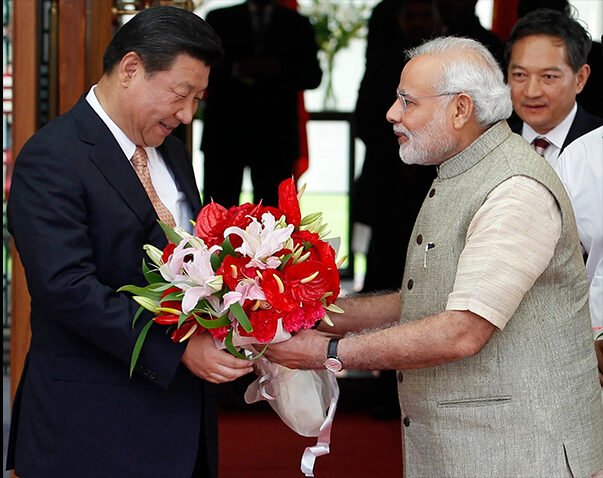Modi to Visit China for First Time in 7 Years Amid Tensions With US The visit, expected to take place later this year, comes at a politically sensitive moment for both nations, as India navigates growing economic opportunities and complex diplomatic challenges in the face of increasing tensions with the United States.
The visit is being closely watched by political analysts, diplomats, and international observers, as it could influence the future of India-China relations, regional stability in Asia, and global geopolitics. While this trip is officially framed as a step toward strengthening bilateral ties, it is also being interpreted as a strategic move in response to changing power dynamics worldwide.
Background of India-China Relations
Relations between India and China have historically been complex, multi-layered, and sometimes tense. The two nations, which share one of the longest borders in the world, have a deep cultural and economic history but also a troubled past marked by the 1962 border war and several recent military standoffs in the Himalayan region.
Over the past decade, economic cooperation has grown significantly, with China becoming one of India’s largest trading partners. However, political trust remains fragile, especially after the deadly clash in Galwan Valley in 2020, which strained diplomatic relations and heightened military tensions.
Since then, high-level political visits have been rare, making Modi’s decision to visit Beijing particularly significant.
Why This Visit Matters
Several factors make this visit a turning point in India-China relations:
- First Visit in Seven Years – Modi last visited China in 2018 for the Wuhan informal summit with Chinese President Xi Jinping. Since then, relations have cooled considerably, and this marks a renewed willingness to engage.
- Changing Global Alliances – With the US-India partnership strengthening in recent years, especially through defense and technology agreements, China has viewed India’s growing closeness to Washington with caution. This visit could signal that India is keeping its foreign policy options open.
- Trade and Economic Diplomacy – Despite political tensions, trade between the two nations crossed $135 billion in 2024. India faces the challenge of balancing economic benefits with national security concerns.
- Regional Security – The situation in the South China Sea, China’s ties with Pakistan, and the BRICS alliance are all issues likely to be discussed during Modi’s visit.
The US Factor
The visit comes as relations between India and the US face a period of delicate adjustment. While Washington and New Delhi have enjoyed closer military and technology cooperation, recent disagreements on trade tariffs, defense procurement policies, and India’s neutral stance on certain global conflicts have added friction.
Additionally, the Biden administration’s renewed focus on China as a strategic competitor has led to increased expectations from India to align more openly with US-led initiatives in the Indo-Pacific region. Modi’s trip to Beijing could be interpreted by some in Washington as a balancing act, signaling India’s unwillingness to be fully tied to one power bloc. READ NEXT https://elevenpakistan.com/pakistani-forces-shoot-down-indian-drone/
Potential Outcomes of the Visit
While it is unlikely that one visit will resolve deep-seated issues, the trip could result in:
- Confidence-Building Measures – Agreements to reduce military tensions along the Line of Actual Control (LAC).
- Trade Negotiations – Talks aimed at lowering tariffs and addressing India’s trade deficit with China.
- Cultural and People-to-People Exchanges – More initiatives in tourism, education, and cultural diplomacy.
- Strategic Dialogue – Discussions on how both nations can cooperate within multilateral frameworks like BRICS, SCO (Shanghai Cooperation Organization), and G20. X
Challenges Ahead
Despite the potential positives, major challenges remain:
- Border Disputes – Without concrete agreements on demarcation, tensions along the border could flare up again.
- Mutual Suspicion – Both nations are wary of the other’s military and geopolitical ambitions.
- Economic Security – India’s push for self-reliance (Atmanirbhar Bharat) and restrictions on Chinese investments may remain contentious issues.
International Reactions
The international community is watching closely. Pakistan, China’s long-time ally, will be keen to see how this visit impacts its own relations with India. The United States will likely monitor every statement and agreement for signs that India might be softening its stance toward Beijing.
Other Asian nations, especially in Southeast Asia, could see this as a positive step toward reducing tensions in the region, particularly if India and China commit to more open communication.
Narendra Modi’s upcoming visit to China is more than just a diplomatic trip—it is a carefully calculated move that could reshape India’s foreign policy landscape for years to come. It signals a potential thaw in relations between two of the world’s most populous nations, while also highlighting India’s strategic desire to maintain a balanced approach between global superpowers.
Whether this visit results in lasting agreements or simply a symbolic gesture, it marks an important moment in South Asian and global diplomacy. In an era of shifting alliances and growing uncertainty, the ability of India and China to engage in dialogue—even after years of tension—remains a significant development for regional and world peace.
READ NEXT



